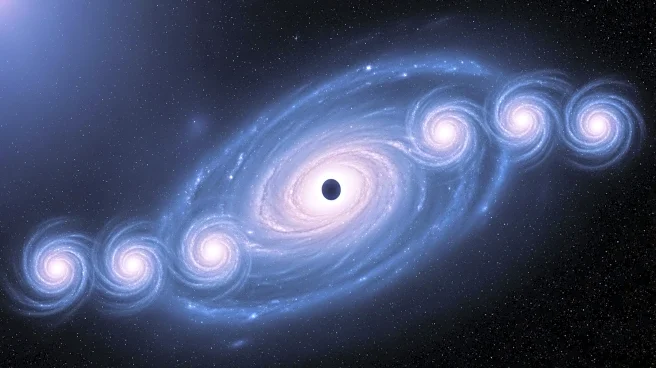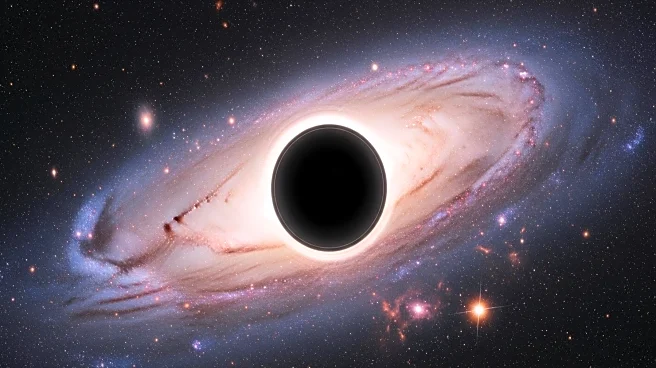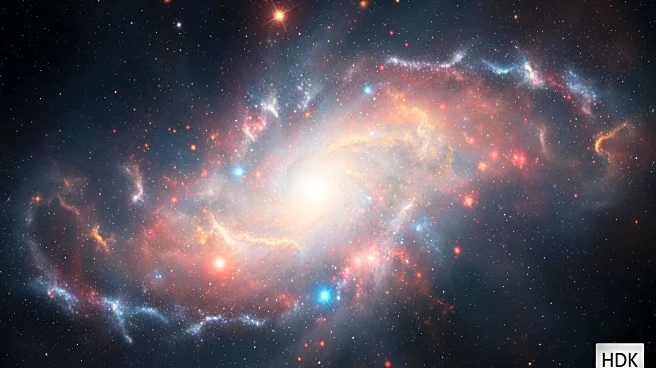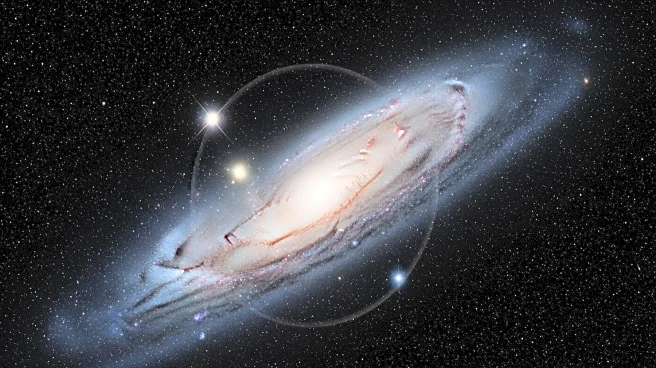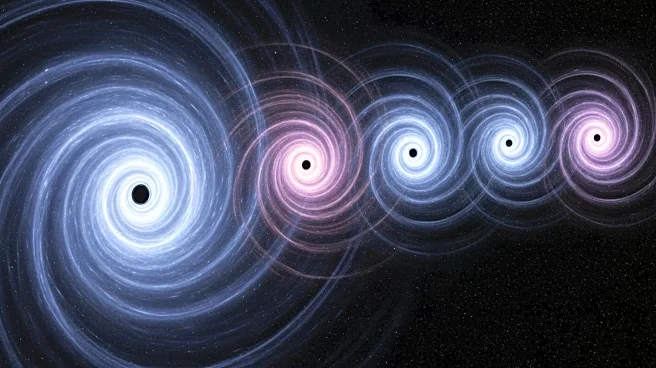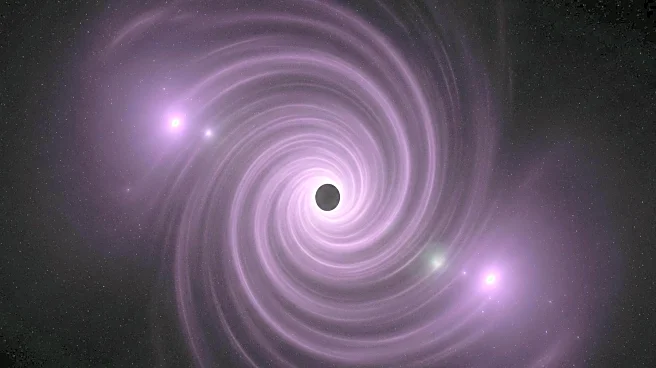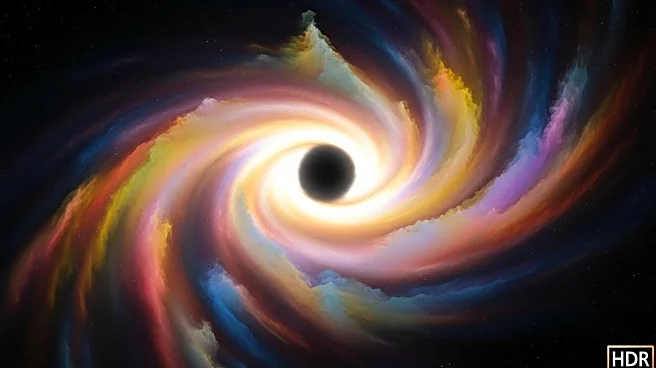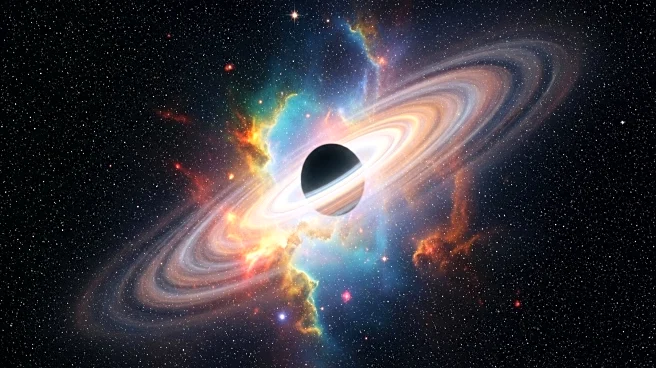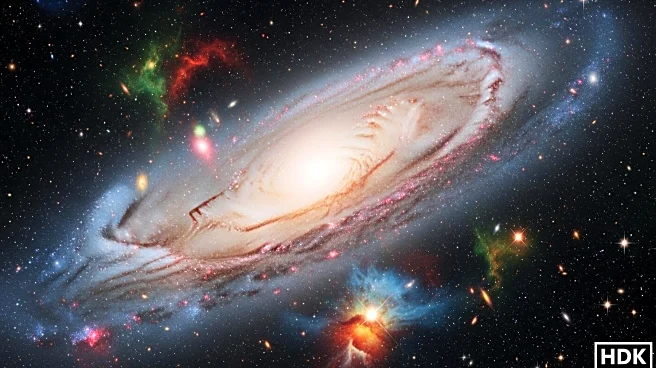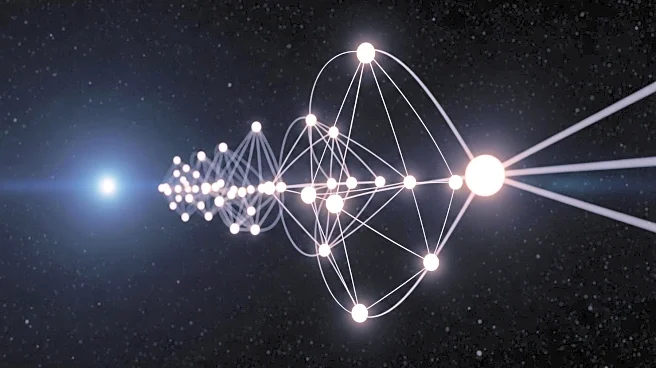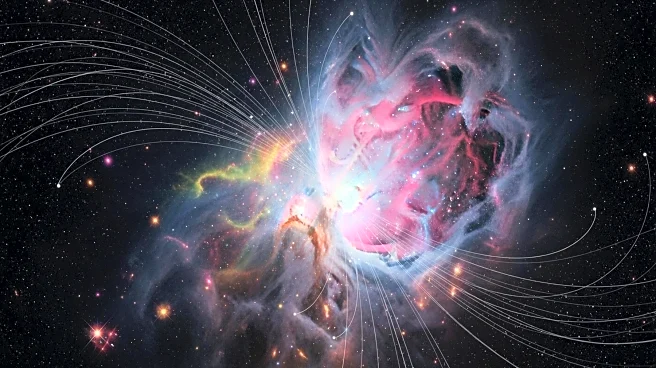What is the story about?
What's Happening?
Astrophysicists using the Very Large Telescope (VLT) in Chile have discovered that the black hole of an infant galaxy was ten times smaller than theoretical models predicted. This finding challenges previous assumptions about the size of early supermassive black holes. The study, published in the journal Astronomy and Astrophysics, suggests that methods used to estimate black hole masses in the early universe may be unreliable. The research involved observing a distant quasar and revealed that the black hole's gravitational pull was shaping nearby matter, with a significant outflow of gas.
Why It's Important?
This discovery has implications for our understanding of the early universe and the formation of supermassive black holes. If similar behavior is found in other galaxies, it could lead to a reevaluation of cosmic evolution models. The findings suggest that black hole masses in the early universe may have been systematically overestimated, impacting theories about galaxy formation and the dynamics of the universe shortly after the Big Bang. This research highlights the need for improved methods to study the early universe and could influence future astronomical studies.
AI Generated Content
Do you find this article useful?
